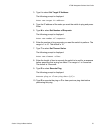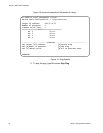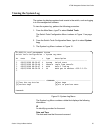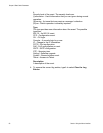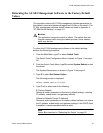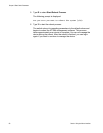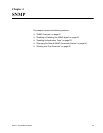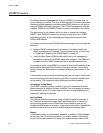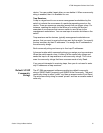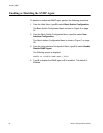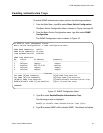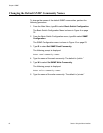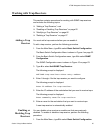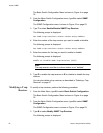AT-S84 Management Software User’s Guide
Section I: Using the Menus Interface 61
device. You can enable it again later, or even delete it. When a community
string is enabled, then it is available for use.
Trap Receivers
A trap is a signal sent to one or more management workstations by the
switch to indicate the occurrence of a particular operating event on the
device. There are numerous operating events that can trigger a trap. For
instance, resetting the switch or the failure of a cooling fan are two
examples of occurrences that cause a switch to send a trap to the
management workstations. You can use traps to monitor activities on the
switch.
Trap receivers are the devices, typically management workstations or
servers, that you want to receive the traps sent by the switch. You specify
the trap receivers by their IP addresses. You assign the IP addresses to
the community strings.
Each community string can have up to four trap IP addresses.
It does not matter which community strings you assign your trap receivers.
When the switch sends a trap, it looks at all the community strings and
sends the trap to all trap receivers on all community strings. This is true
even for community strings that have a access mode of only Read.
If you are not interested in receiving traps, then you do not need to enter
any IP addresses of trap receivers.
Default SNMP
Community
Strings
The AT-S84 management software provides two default community
strings: SNMP Read Community and SNMP Write Community. The read
community string is called “public” and has an access mode of just Read.
The write community string is named “private” and has an access mode of
write only.



